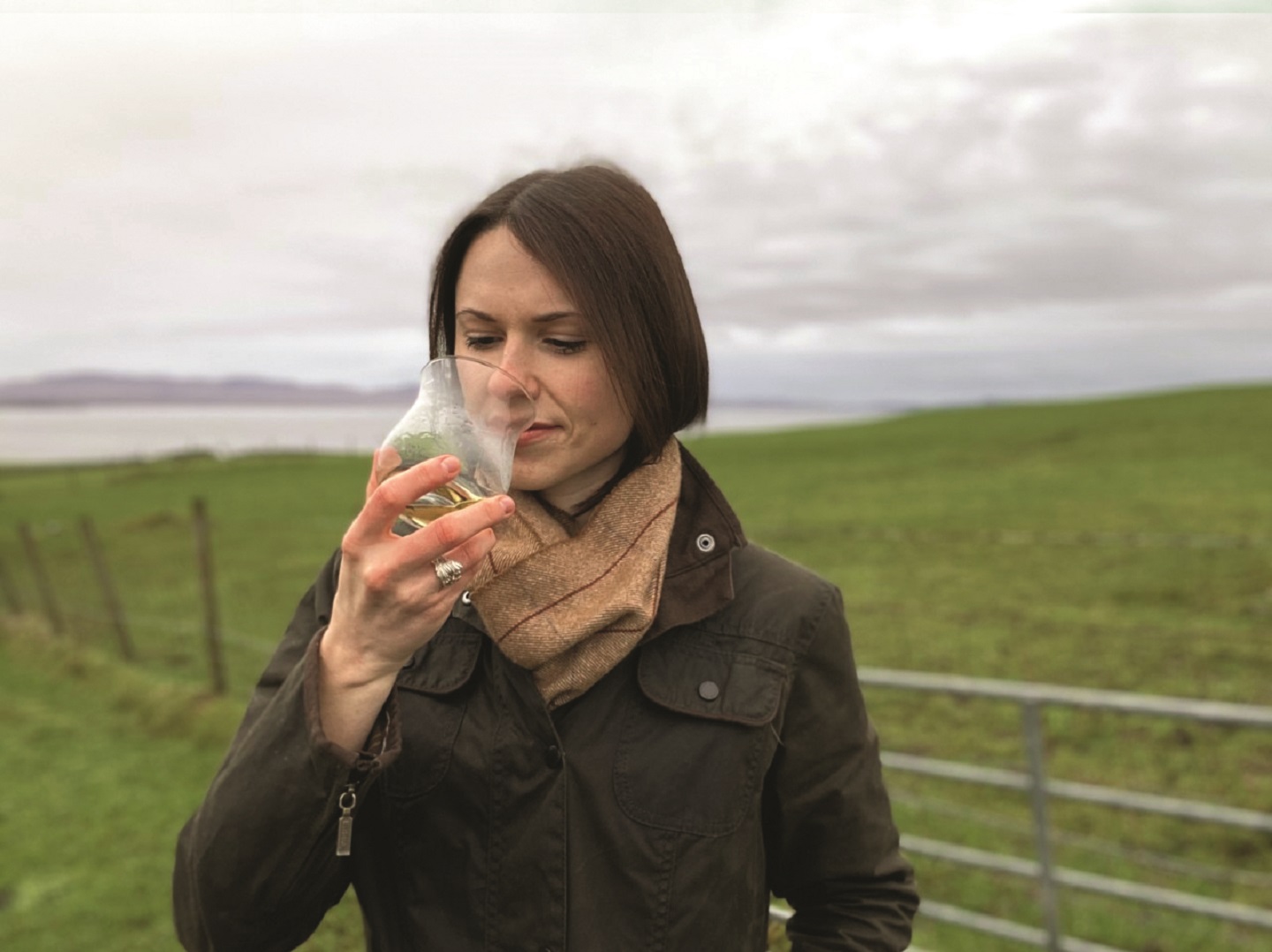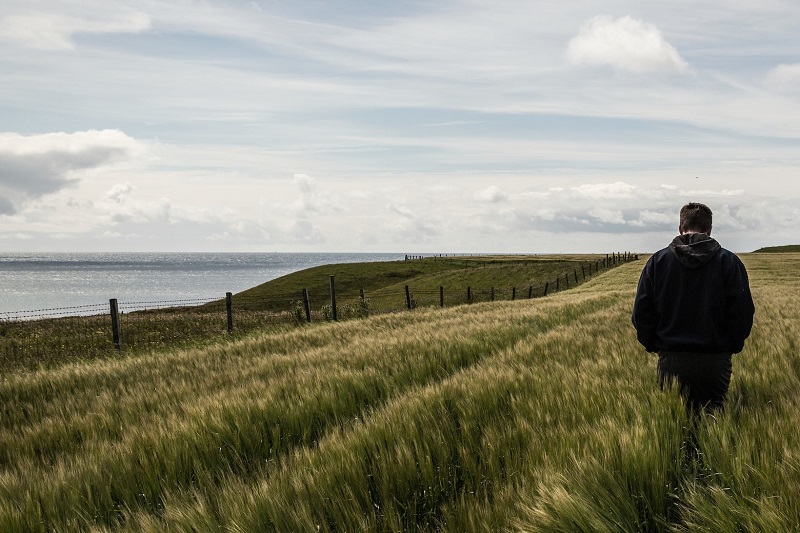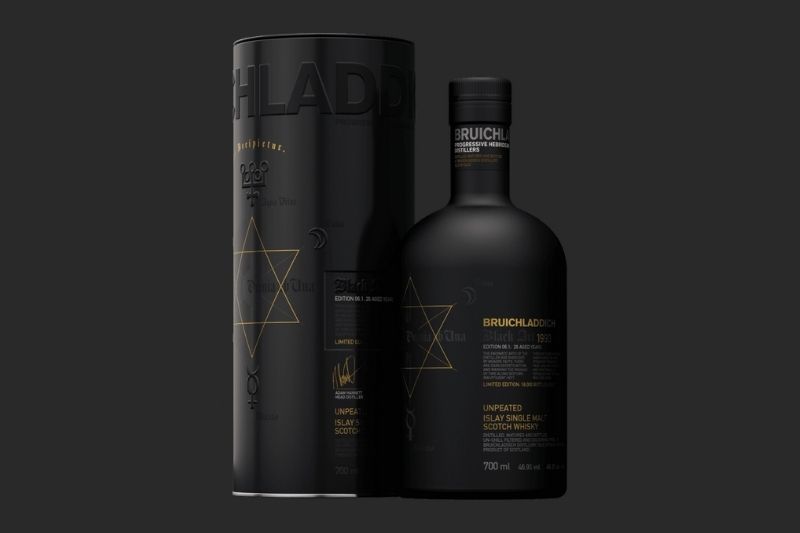
Wood is the brand's youngest ambassador (All photos: Bruichladdich)
The ballad of John Barleycorn by Robert Burns is a tribute to the cereal crop that has kept the Scots fed since the Middle Ages — and watered (via whisky) since the 1800s. It paints the crop as a proud protagonist, put through the indignities of harvest, mashing and malting, only to be celebrated in song as a hero: “Then let us toast John Barleycorn, each man a glass in hand; and may his great posterity, ne’er fail in old Scotland!”
For Burns, the story of barley is the story of whisky, a premise Bruichladdich was happy to adopt when the distillery was revived in 2001. Founded in 1881, it became one of nine working distilleries on the Isle of Islay and was shuttered in 1994 after being declared a “surplus to requirements”. Wine merchant Mark Reyneir reopened it following the seven-year hiatus, and engaged distiller extraordinaire Jim Ewan to work his magic on the old stocks and stills — most of the original equipment remains and is still in use today.
The biggest transition to come with the new ownership was the change in mindset. “Wine is closely linked to the word ‘terroir’,” says Bruichladdich ambassador Chloe Wood. “When you talk about wine, you talk about region and grape varietal. But back then, whisky was discussed in terms of age and cask, not grain and origin. Mark said of course it matters and has an influence on the final spirit, so it has to have traceability. Until then, you could buy barley from anywhere in the world, bring it to Islay to be mashed, fermented and distilled, and then shipped to the mainland for bottling and storage. So you’d be drinking a 20-year-old Islay single malt that spent all of a week of its life on the island. That really changed the way we saw whisky.”
andrew-jones-1500x1000.jpg

Provenance was woven into the vows of quality of the resurrected Bruichladdich. Only Scottish barley is sourced for its single malts and its traceability guaranteed parcel by parcel. Transparency became a pillar of the brand, and Remy Cointreau was happy to uphold this philosophy when it bought into the company in 2012. For instance, every bottle of The Classic Laddie and The Laddie Eight has a batch code printed on the back of the bottle that can be entered on the brand’s website to reveal the unique recipe for that specific bottle.
Bruichladdich was already distinguished from its Islay peers by being the only unpeated proposition, more Speyside in its spirit and cask-forward flavours. The heavily peated Port Charlotte and super heavily peated Octomore — think bonfire worthy, with peat strength of between 80 and 300 peat parts per million — plied the properties of barley while popular The Botanist Islay Dry Gin flexed its muscle in the realm of botanicals.
The distiller’s credibility allowed it to experiment freely and find a willing audience regardless of proposal. The Bruichladdich Black Art, for instance, shrouds the nectar in a matte black bottle that reveals little, apart from the most pertinent information, such as ABV strength and distillation year. The series so far is typically aged between 18 and 26 years, depending on which vintage the distiller wants to showcase, and is a much older age statement than that traditionally favoured by the core Bruichladdich range. Vintages comprise the elixirs that ran through the Victorian stills before the distiller closed as a tribute to the brand’s rich heritage.
“We were doing all these really cool releases and buying a wide array of high-quality casks,” says Wood, the brand’s youngest ambassador. The Islay native was 23 years old when she stepped into the role in 2018, and constantly marvels at her relative youth next to the old stocks. “The idea was to create a secret recipe known only to the head distiller and mature it in some of our most premium casks. It was named Black Art because it celebrates the alchemy, the black magic behind whisky production. It took people by surprise because we’re usually so transparent, but they were willing to trust the product.”
bruichladdich_black_art.jpg

Stripping away the stories that typically surround whisky and allowing the drink to do all the talking might have been a risky move, but customers were more than willing to buck convention and sip from the fountain of mystery. Theories abound online about what’s in the limited-edition Black Art bottles, but the puzzle is undeniably part of the fun.
Experimentation is not limited to the Bruichladdich brand. Where Black Art celebrates age, Octomore dismisses it, with each release more experimental than the last. Its production is nicknamed The Impossible Equation because the numbers simply do not add up. Sometimes bottled at just five years old, the whisky is super heavily peated and at cask strength. On paper, given the rules of whisky wisdom, the combination of its youth and profile should make it undrinkable.
“And yet it’s a very wonderful Scotch,” beams Wood. “It really shouldn’t work but its taste tells a different story. It’s cool to be able to dispel these old myths about what whisky should and should not be like. For years, it’s been drilled into consumers that whisky needs to be at least 12 years old for good flavour, or matured in bourbon casks for best results, but that’s not true.”
Each new set — it is up to Octomore 11 now — features four variants that study the elements which affect the drink’s depth and balance, from the sourcing of raw ingredients or cask type to nature’s influence in terms of weather, climate and soil. The entire approach is both scientific and wildly creative, making this perhaps one of the most delicious sets of hypotheses of all time.
It requires great courage to take such risks, but Bruichladdich has proven time and again that when faced with a choice of certainty or sheer possibility, it will place its bets on the latter. This openness and forward-thinking spirit resonates beyond the barrels and bottles — last year, it became the first Scotch whisky distiller to acquire B Corp certification, which requires a balancing of purpose and profit by meeting the highest standards of social and environmental impact, including the payment of living wages.
“The Bruichladdich story is a great, complex one,” says Wood. “At the end of the day, however, the nicest stories still account for little if the product itself does not live up to expectations. It always comes back to that, to making good whisky. And that means having great practices from the very foundation — like the barley we choose.”
This article first appeared on May 17, 2021 in The Edge Malaysia.


